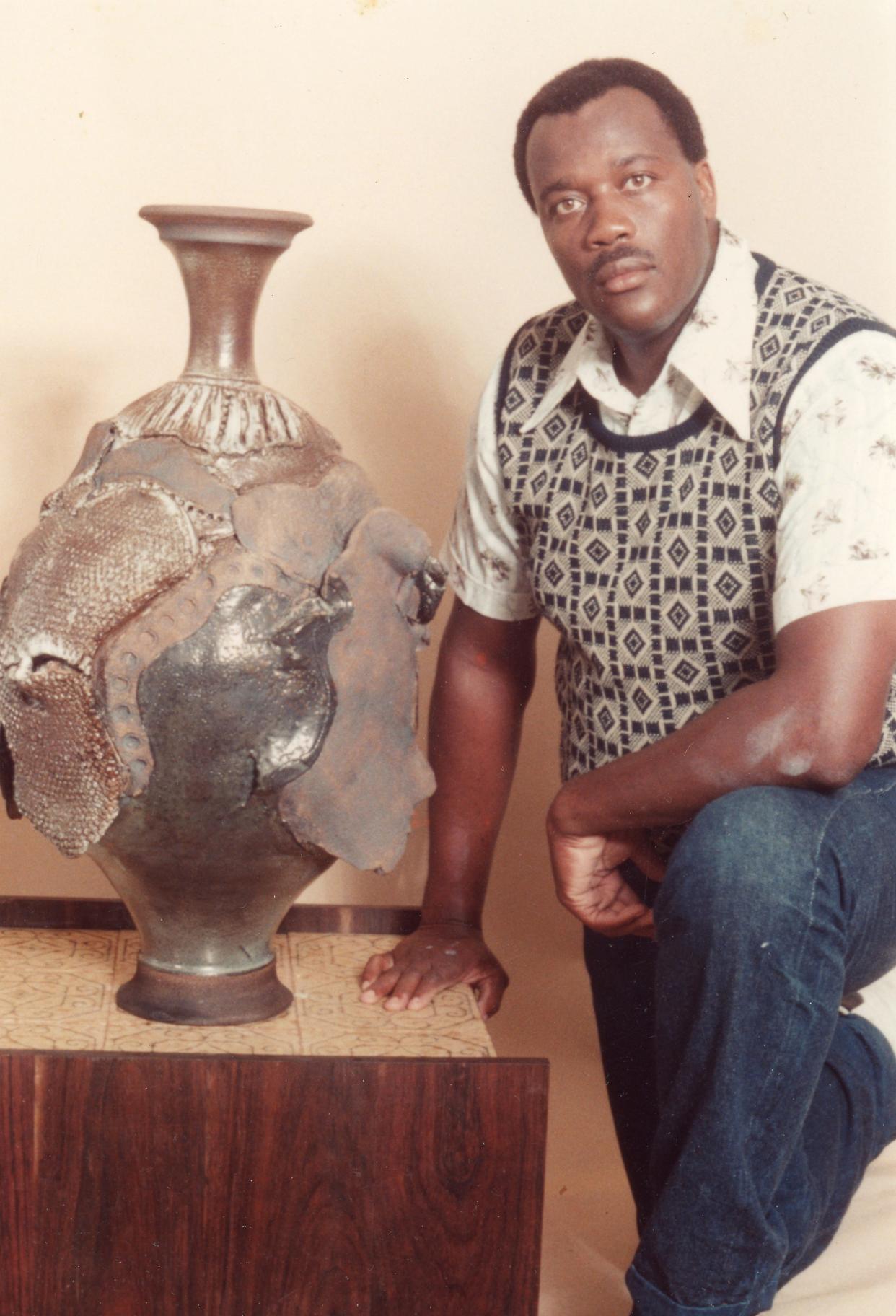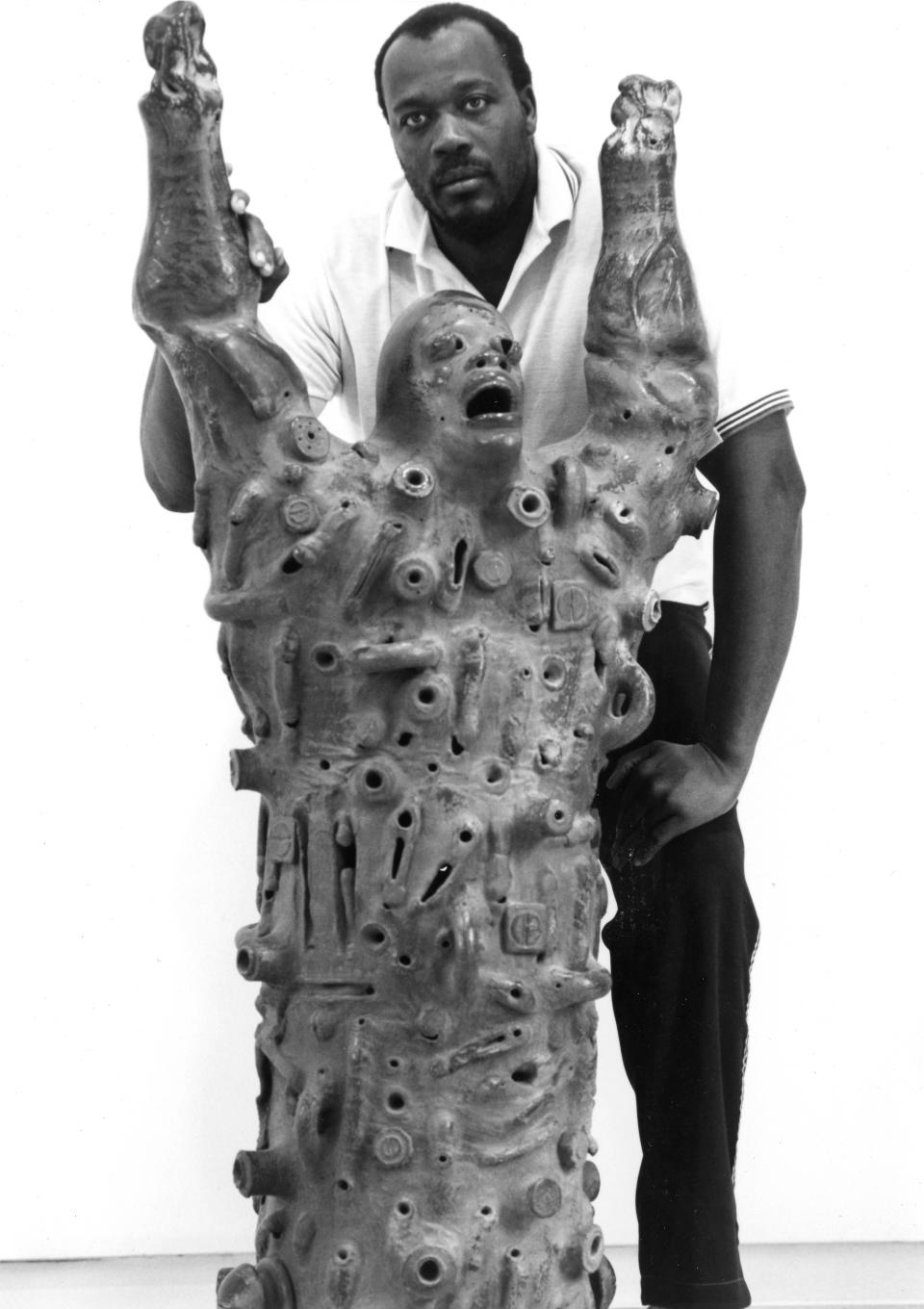Gadsden native Nathaniel Bustion Jr., famed Black artist, dies at 80

A Gadsden native who achieved fame as a multimedia artist died earlier this year, according to family members.
Nathaniel “Sonny” Bustion Jr., 80, died Oct. 15 in Glendale, California.
His work — ceramics, engraving, lithography, painting and sculpture — exploring his African American roots has been exhibited across the world.
Venues have included the Studio Museum in Harlem; Howard University and the Smithsonian Institution in Washington; the second African Festival in Lagos, Nigeria; the United Nations office in Geneva, Switzerland; Thailand University in Bangkok; the Antwerp Academy of Art in Belgium; the African American Museum in Philadelphia; the Thomas Hall Art Gallery in Dallas; and, in his adopted state of California, the Dorothy Chandler Pavilion, the California African American Museum and the FDG Art Gallery in Los Angeles, the State Capitol in Sacramento and the Altadena Library.
Bustion’s work also has been featured in collections at the Smithsonian, the United Nations, the PanAm Building in New York and Colorado State University, his alma mater, and in films and TV shows including “Soul Food,” “The Fresh Prince of Bel-Air,” “The Soul of the Game,” “Moesha,” “Livin’ Single” and “Hangin’ with Mr. Cooper.”
The second of six children of steel worker Nathaniel “Pete” Bustion Sr. and Annie Laura Sherrell-Bustion, he graduated from Carver High School, then earned a basketball scholarship to Colorado State, where he received a degree in commercial art.
A 6-foot-7 forward, he was taken by the San Francisco Warriors in the seventh round of the 1967 NBA draft. but signed with a Belgian team in Antwerp. While playing there, he earned a fine arts degree at the Antwerp Academy of Art.
Bustion returned to the United States and began teaching at the Studio Watts Workshop, a community arts center in Los Angeles. There, he met Charles White, a prominent Black artist and teacher, known for his paintings and prints focusing on the African American struggle for equality.
White became Bustion’s mentor, and Bustion was one of the first students to receive the Charles White Art Scholarship. He earned a Master of Fine Arts degree from the Otis Art Institute (now the Otis College of Art and Design), receiving instruction from White himself.
Bustion said of White in a 2002 interview, “I was really blessed to be in his company and watch him talk about creativity, the social consciousness and hysteria behind it. It was an education that I couldn’t get anywhere else on the planet. I learned the most incredible things from him. This brother put some knowledge on me I’m still discovering today.”
Younger brother David Bustion — who played college basketball at the University of Denver, was drafted by the KC-Omaha Kings and, after a brief time with the Denver Nuggets, spent years as a player and coach in Europe — said that was the point when Bustion began to fully embrace his African American roots.

The elder Bustion spent much time in Africa, learning ancient ceramic sculpting, firing and glazing techniques from traditional scuptors, and teaching art in Lagos.
Art historian Samella Lewis, who died in May and was known as the “Godmother of Black Art,” called Bustion’s ceramic sculptures “beautiful and monumental,” and described him as among the best African American practitioners of that genre of his generation.
“Nathaniel was always creating,” said David Bustion, who now lives in Geneva. “... He believed that creative energy restores, rejuvenates and sustains life across time and cultural lines. I believe much of his deep artistic energy came from our grandmother, who raised us while our parents worked. She was a third-generation quiltmaker. She taught us not just to carve soap and wood as youngsters, but also to believe and understand that we were artists.”
The elder Bustion said of their grandmother, Bular Mae Sherrell, who lived to age 103, “She said art comes from a genetic imprint. We’re all born with a blueprint. God gave it to all of us, she used to say. What we choose to do with this is up to us. We are all gifted artists. It’s up to you to tap into it.”
Other family members were also creative: His mother was a pianist and uncle Jessie Lee Willis was a jazz trumpeter.
As for his own artistic vision, Bustion said, “Art must be an integral part of the struggle. It can’t simply mirror what’s taking place. It must adapt itself to human needs. It must ally itself with the forces of liberation.
“The fact is that artists have always been propagandists,” he said. “I have no use for artists who try to divorce themselves from the struggle.”
Bustion and his wife later ran the Mattinnii Studio in Altadena.
Along with his brother, Bustion is survived by three sisters-in-law, three cousins, 11 nieces and 10 nephews. A memorial service for family and friends is pending.
This article originally appeared on The Gadsden Times: Artist Bustion, known for chronicling Black experience, dies at 80

